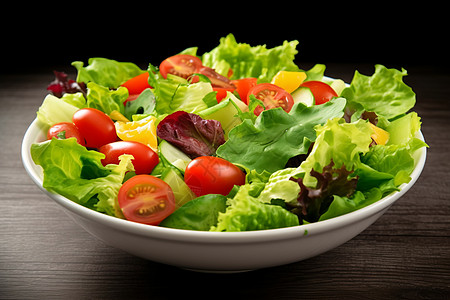Vegetable Salad: A Taste of Healthy Vitality
Nutritional Value
The nutritional value of vegetable salad is diverse and dense, offering a range of essential nutrients that support health and well-being. Leafy greens, such as spinach, kale, and Swiss chard, are rich in vitamins A, C, and K, as well as folate and iron. Carrots, beets, and other root vegetables provide beta-carotene, fiber, and potassium. Tomatoes, red bell peppers, and other brightly colored vegetables are rich in antioxidants like lycopene and vitamin C. The wholesome mix of vegetables supports digestive health, immune function, eye health, and more.
Ingredients
The key to a great vegetable salad is using a variety of fresh vegetables. Start with a base of leafy greens and add a mix of colors, textures, and flavors. Some common ingredients include tomatoes, cucumbers, bell peppers, carrots, celery, radishes, and onions. Bean sprouts, broccoli, asparagus, and other vegetables can also be included for added crunch or bite. For extra richness and depth of flavor, consider adding avocado or chunks of cheese. Drizzle with your choice of dressing or vinaigrette to coat the vegetables.
Preparation
Preparing a vegetable salad is simple yet essential for maximum flavor and nutrition. Start by thoroughly washing all the vegetables. Remove any tough stems or peels as needed. Cut the vegetables into bite-sized pieces or slices. Toss the prepared vegetables in a bowl or on a platter. Drizzle with your choice of dressing or vinaigrette and gently mix to coat all the ingredients. For extra crunch, add nuts or seeds like walnuts, sunflower seeds, or pepitas.
To preserve nutrients and flavor, it is best to refrigerate the vegetable salad before serving. It is important to use fresh ingredients and ensure that all cutting boards and utensils are clean to prevent food safety risks like food poisoning.
Consumption
Vegetable salad can be served as a side dish with meals or as a standalone light meal. It pairs well with grilled meats, poultry, or fish. Eat the vegetable salad directly out of the bowl or use a fork and knife to eat it from a plate. To control calories if needed, reduce the amount of dressing used or choose a lower-calorie option.
Additional Considerations
- For people with dietary restrictions or allergies, it is important to choose appropriate ingredients according to their specific needs. Check labels on dressings and cheeses to ensure they are suitable for your dietary requirements.
- When selecting vegetables for your salad, consider their ripeness and freshness. Opt for vegetables that are in season and at their peak of freshness for maximum flavor and nutritional value.
- Storage: To maintain freshness and prevent spoilage, store vegetables in a cool and dark place with good air circulation. Avoid storing vegetables in plastic bags or sealed containers for long periods as they may sweat and become soggy.
- Food safety: It is essential to practice good hygiene when preparing vegetable salads to avoid food poisoning and other food safety risks. Always wash hands thoroughly before handling raw vegetables. Use clean cutting boards and knives when cutting vegetables. Store ingredients in clean containers or sealable bags to prevent cross-contamination between ingredients. Check ingredients for any signs of spoilage before using them to ensure food safety.

